Afar: 11 Lost Cities, and Atlas Obscura: 14 Lesser-Known Ancient Sites
11 Lost Cities You Can Actually Visit
Rediscover these abandoned cities by traveling to see their ruins, where you can readily imagine their lost-to-time structures and civilizations.
Jen Rose Smith
More from Afar
- The West Texas Road Trip You Didn’t Know You Were Missing
- This Sunny Island Is Denmark’s Best-Kept Secret
- America’s Most Underrated National Monuments
 The carvings and palace of Persepolis were rediscovered in the 20th century. Photo by Matyas Rehak/Shutterstock.
The carvings and palace of Persepolis were rediscovered in the 20th century. Photo by Matyas Rehak/Shutterstock.
When the lost city of Kweneng, South Africa, was discovered, it wasn’t because someone found a fossil there or excavated it with a shovel. Instead, archaeologist Karim Sadr relied on LiDAR technology, which uses lasers to measure distance, to create detailed images of the surrounding Suikerbosrand hills, where Tswana-speaking people first built stone settlements in the 15th century.
It was a slow process that spanned more than two years, sort of a digital version of clearing vines from a hidden temple. Sadr pored over the data looking for patterns beneath the area’s thick brush. Rounded shapes emerged on the black-and-white LiDAR images, helping to reconstruct the lives of families who lived in the stone homesteads, herded cattle, and created ash heaps (typically the remainders of feasts) to flaunt their wealth. While scientists had long believed that the hills held a series of small, lost-to-time communities, Sadr’s finds extended far beyond the aboveground ruins already visible on the site. “There was no real ‘eureka’ moment,” said Sadr, “but it seems that one day I was looking at a collection of villages and the next day I saw a city.”
Cities such as Kweneng are forgotten for a variety of reasons, and their remains have always exerted a powerful draw on inquisitive travelers. While Kweneng’s visitor infrastructure isn’t quite as developed yet, there are plenty of other rediscovered cities to visit. Whether you’re among the dusty palaces at Xanadu or walking along ancient Troy’s battlements, you can channel your inner explorer while visiting these ruins, whose cultural breadth and evocativeness show how enduring lost cities can be.
Persepolis, Iran
Achaemenid Empire kings fortified a natural stone terrace into an imposing platform when they founded Persepolis in the 6th century B.C.E., leveraging the landscape to awe-inspiring effect and military advantage. After centuries in the sand, the delicate carvings, inscriptions, and palaces of Persepolis were excavated in the 20th century. Apadana Palace dominates the oldest part of the site, where travelers will see 13 of the original 72 towering stone columns—the only survivors of a 331 B.C.E. attack by Alexander the Great. If you travel to Iran, we recommend booking through a tour operator like Intrepid, which can help facilitate visas.
 The architectural wonder of Petra is one of Jordan’s main attractions. Photo by Yongyut/Shutterstock.
The architectural wonder of Petra is one of Jordan’s main attractions. Photo by Yongyut/Shutterstock.
Petra, Jordan
The entrance to Petra is designed for maximum impact, leading visitors from a shadowy gorge to views of soaring, tangerine-colored rock. Inhabited since prehistoric times, Petra was carved by Nabateans (who likely established it as the capital city in the 4th century B.C.E.) and is Jordan’s star attraction. It’s still easy enough to find solitude in the now-uninhabited desert site. Ditch the tour groups by climbing a steep pathway to the High Place of Sacrifice; its pair of monumental obelisks are believed to represent Nabatean gods.
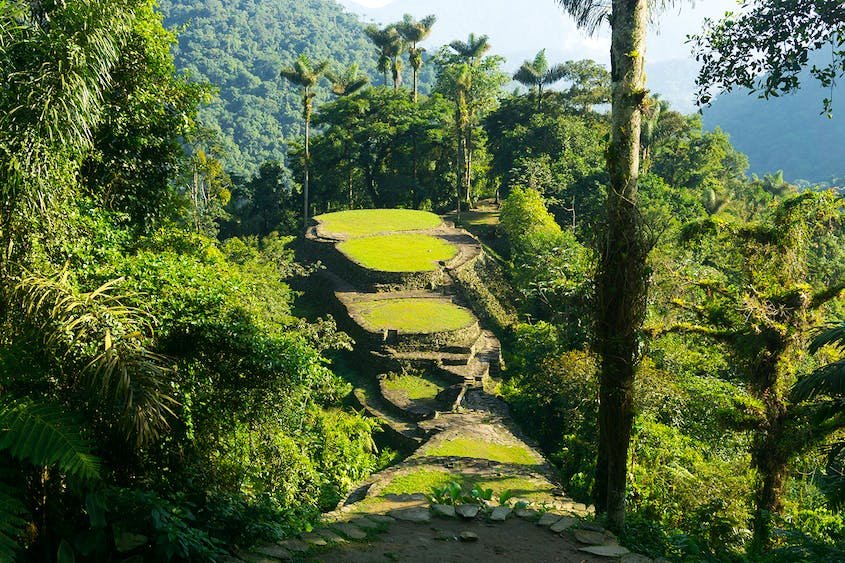 Ciudad Perdida, a forest city in Colombia, takes five days to reach. Photo by Scott Biales/Shutterstock.
Ciudad Perdida, a forest city in Colombia, takes five days to reach. Photo by Scott Biales/Shutterstock.
Ciudad Perdida, Colombia
Founded in the 9th century, this forest city developed a unique architectural plan of stone pathways, plazas, and houses over centuries, but dense jungle swallowed them shortly after the arrival of Europeans. The five-day trek to Ciudad Perdida (the only way to get there) is an adventure in and of itself. Brave the steep, muddy trail to reach ceremonial terraces and to meet Colombia’s indigenous Kogi and Wiwa people, who are some of the site’s modern-day guardians and live in the region.
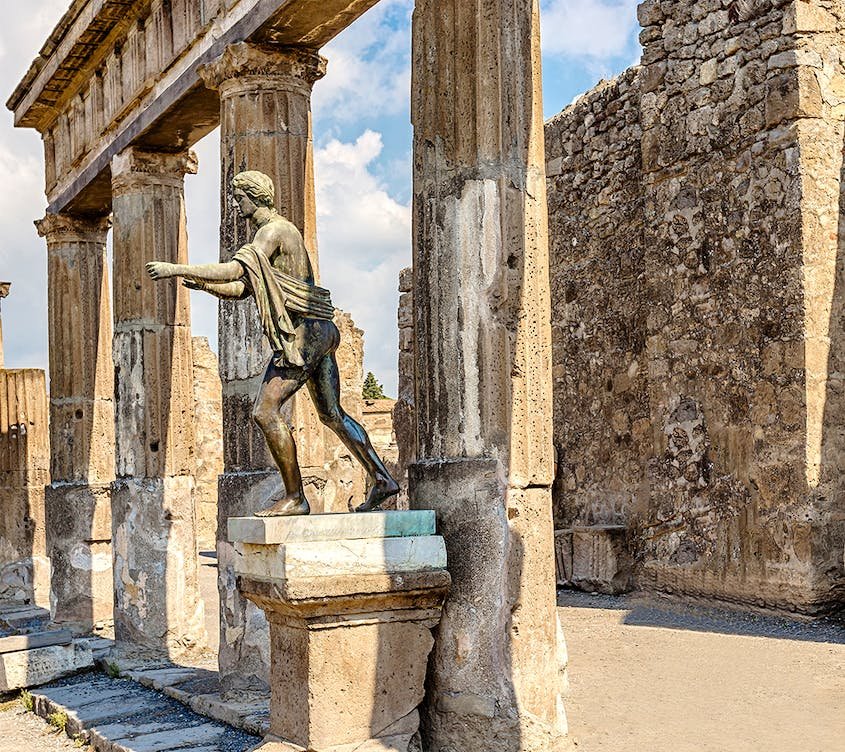 Pompeii’s Temple of Apollo. Photo by Bahdanovich Alena/Shutterstock.
Pompeii’s Temple of Apollo. Photo by Bahdanovich Alena/Shutterstock.
Pompeii and Herculaneum, Italy
Billowing ash from Mount Vesuvius dimmed the sky above Pompeii and Herculaneum in 79 C.E., then buried the cities for nearly 17 centuries. While history this ancient often requires leaps of imagination, the tragic past remains eerily vivid here. Take a transporting walk through the cities, which are about a 20-minute drive apart, to see brilliant frescoes, visit the site of an ancient brothel, see the petrified bodies, and pay your respects in the Temple of Apollo.
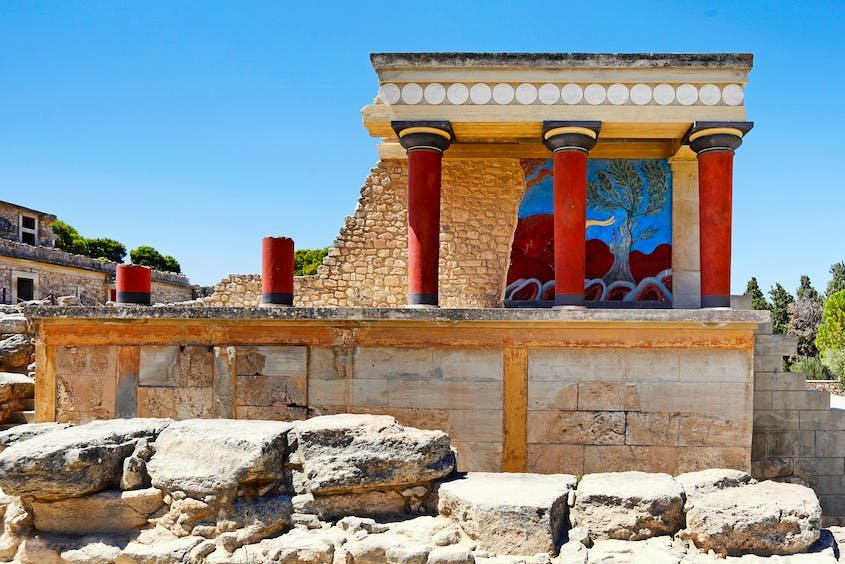 The Palace of the Minoans in Knossos. Photo by Constantinos Iliopoulos/Shutterstock.
The Palace of the Minoans in Knossos. Photo by Constantinos Iliopoulos/Shutterstock.
Knossos, Greece
The Minoan palace at Knossos was already ancient when Homer wrote his Odyssey, and it has myth and history layered into its Bronze Age foundations. Archaeologist Arthur Evans began excavations of the site on Crete in 1900; he linked his findings of the remains of the palace to the mythological labyrinth where the minotaur—a half-man, half-bull born to a Cretan queen—lurked in darkness. While that story remains unproven, travelers can judge the creature’s legendary origins for themselves when visiting the palace’s east wing, which is adorned with a fresco that depicts three figures and a giant vaulting bull.
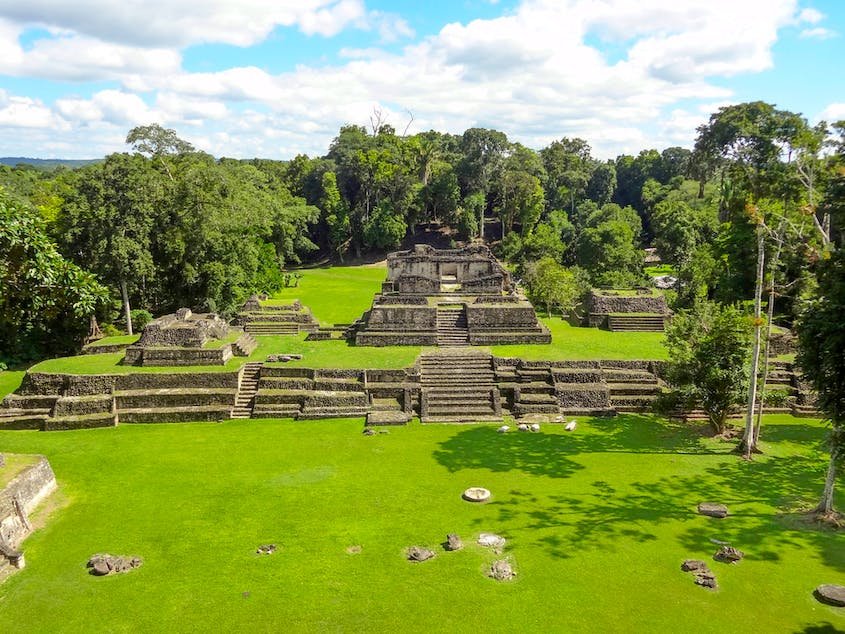 The Caana complex is the tallest structure in Belize. Photo by PRLLL/Shutterstock.
The Caana complex is the tallest structure in Belize. Photo by PRLLL/Shutterstock.
Caracol, Belize
Trees curl around Caracol’s stone pyramids, which the Belize jungle overtook after residents abandoned the site in the 11th century. Its architectural achievements are impressive even by modern standards: Caana, the temple complex at the heart of Caracol, remains the tallest structure in the country at 141 feet, and archaeologists believe the Maya metropolis would have dwarfed the area of today’s Belize City. Rediscovered in 1938, Caracol draws far fewer visitors than nearby Tikal—plan an early-morning visit and you might have it to yourself.
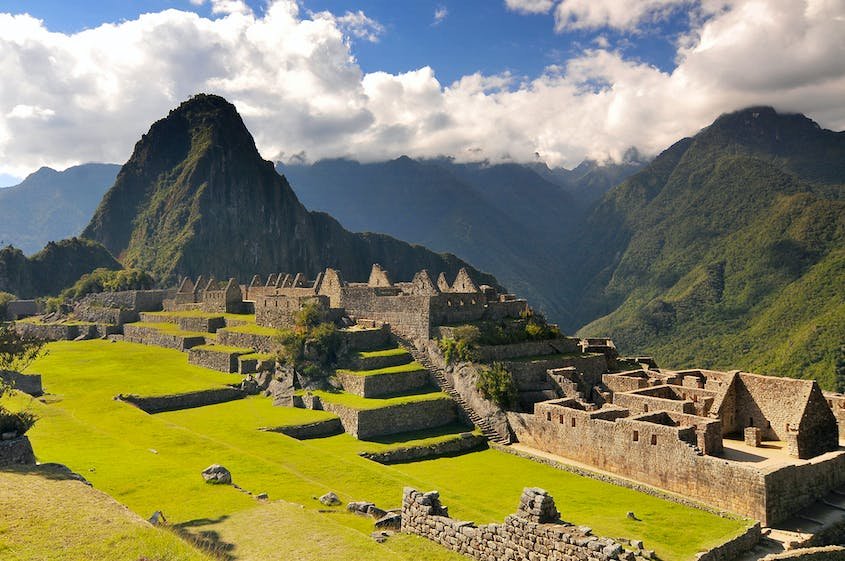 The remnant fortifications of Machu Picchu were found in 1911. Photo by Cezary Wojikowski/Shutterstock.
The remnant fortifications of Machu Picchu were found in 1911. Photo by Cezary Wojikowski/Shutterstock.
Machu Picchu, Peru
Carved high in the Andes, Machu Picchu was a fitting sanctuary for the Inca, who honored the turbulent gods of the mountains. Emptied by the fall of the Inca Empire in the 16th century, the gorgeous synthesis of peaks and fortifications have drawn adventurers to Peru since the citadel was rediscovered in 1911. Journey to Machu Picchu by footpath, bus, or luxury train, then trek to the neighboring peak of Huayna Picchu for classic views across the main site.
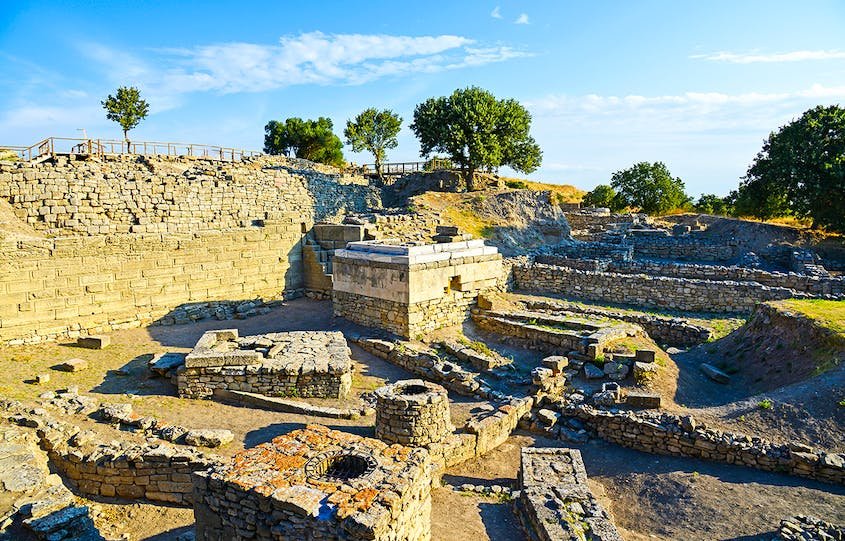 An archaeologist used Homer’s “Iliad” to find Troy in 1870. Photo by Lillac/Shutterstock.
An archaeologist used Homer’s “Iliad” to find Troy in 1870. Photo by Lillac/Shutterstock.
Troy, Turkey
A dramatic setting for the ancient world’s most consequential love triangle, Troy has a 4,000-year history that merges with myth near Turkey’s Aegean coast. Discovering Troy was a driving passion for Heinrich Schliemann, an archaeologist who used Homer’s Iliad like a treasure map and found the site in 1870. After you walk through the ancient fortifications and palaces here, see the troves they once held in the Troy Museum, which opened in October with interactive exhibits highlighting gleaming jewelry, marble statues, and other treasures.
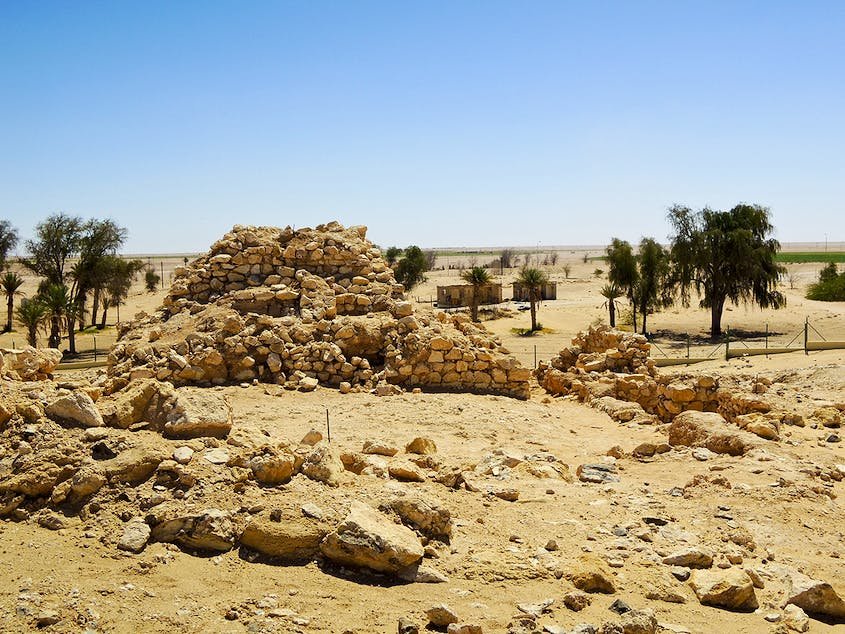 Ubar was untouched in the middle of the Arabian peninsula for nearly 1,000 years. Photo by Damian Ryszawy/Shutterstock.
Ubar was untouched in the middle of the Arabian peninsula for nearly 1,000 years. Photo by Damian Ryszawy/Shutterstock.
Ubar, Oman
As camels laden with frankincense crossed the Empty Quarter of the Arabian peninsula, travelers gathered for dates and gossip at trading posts deep in the desert. Lost to the blowing sand for nearly 1,000 years, Ubar is one such site; it was found in 1992 using images taken from space. Located on the southernmost edge of Oman, Ubar is two hours inland from the Arabian Sea city of Salalah. Make the trip to see stone walls and fortifications that are rising from the dusty ground as excavations proceed.
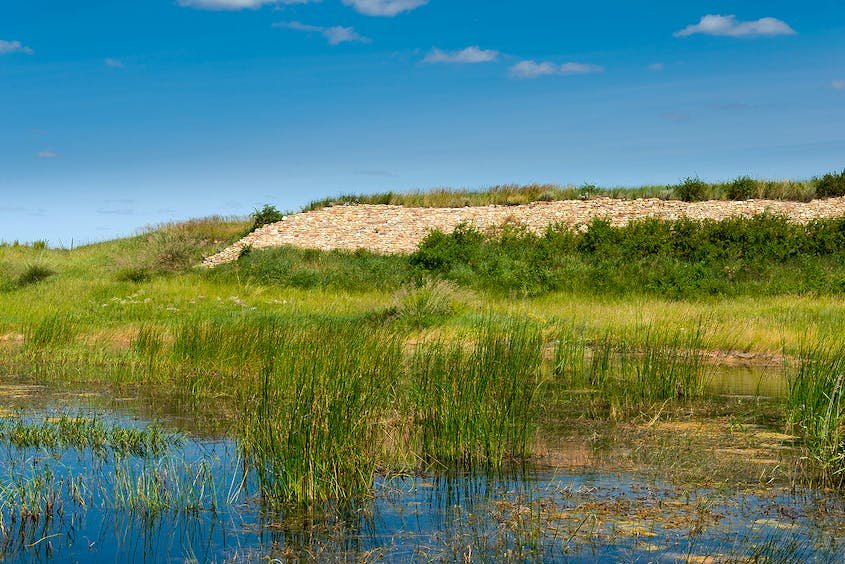 Xanadu is surrounded by grasslands in every direction. Photo by beibaoke/Shutterstock.
Xanadu is surrounded by grasslands in every direction. Photo by beibaoke/Shutterstock.
Xanadu, China
Kublai Khan ruled his empire from the city of Xanadu, surrounded by a grassland steppe that stretched to the horizon in every direction. Located about five hours northwest of Beijing, this is where Mongolian and Han cultures mingled, and travelers debated philosophy in gracious palaces and gardens. Find the remains of that cosmopolitan capital in Xanadu’s excavated temples, stone walls, and tombs, which were abandoned to the windy plains in the 15th century.
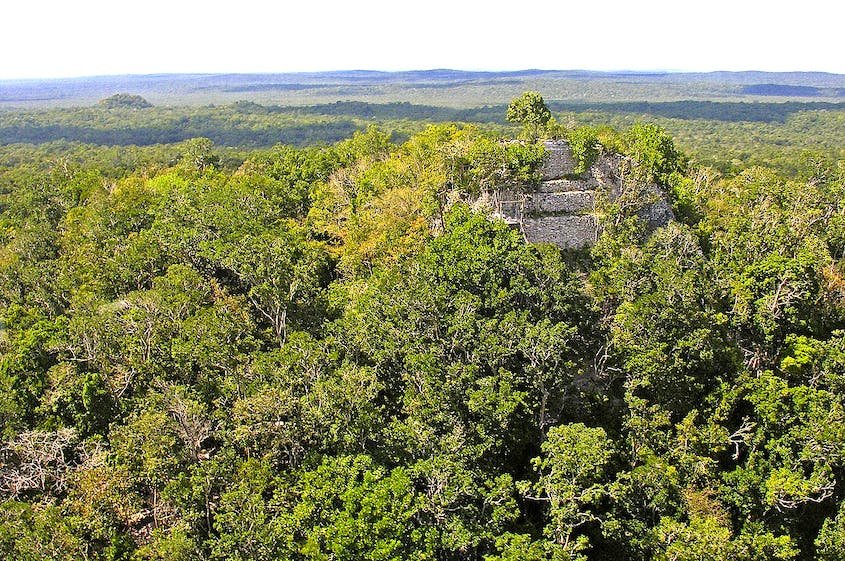 The La Danta pyramid towers above the Guatemalan forests. Photo by Dennis Jarvis.
The La Danta pyramid towers above the Guatemalan forests. Photo by Dennis Jarvis.
El Mirador, Guatemala
Only an adventurous few will reach the ancient Maya city of El Mirador, which dates back to 1,000 B.C.E. and is shrouded by the largest tropical forest north of the Amazon. There are only two ways to get here: Charter a helicopter or trek two days from the road’s end at the village of Carmelita. Make the journey to El Mirador to climb La Danta, a towering pyramid whose crest swells above the surrounding canopy.
How was it? Save stories you love and never lose them.
Explore the world with AFAR.
For more information, please visit the following link:
https://getpocket.com/explore/item/11-lost-cities-you-can-actually-visit?utm_source=pocket-newtab
14 Lesser-Known Ancient Sites Worth Building a Trip Around
Check out Atlas Obscura readers’ favorite archaeological wonders.
- Eric Grundhauser
Read when you’ve got time to spare.
More from Atlas Obscura
- Drought Has Revealed Spain’s Long-Submerged ‘Stonehenge’
- Why Are There Palm Trees in Los Angeles?
- The Strange Emptiness of Egypt in 19th-Century European Photographs
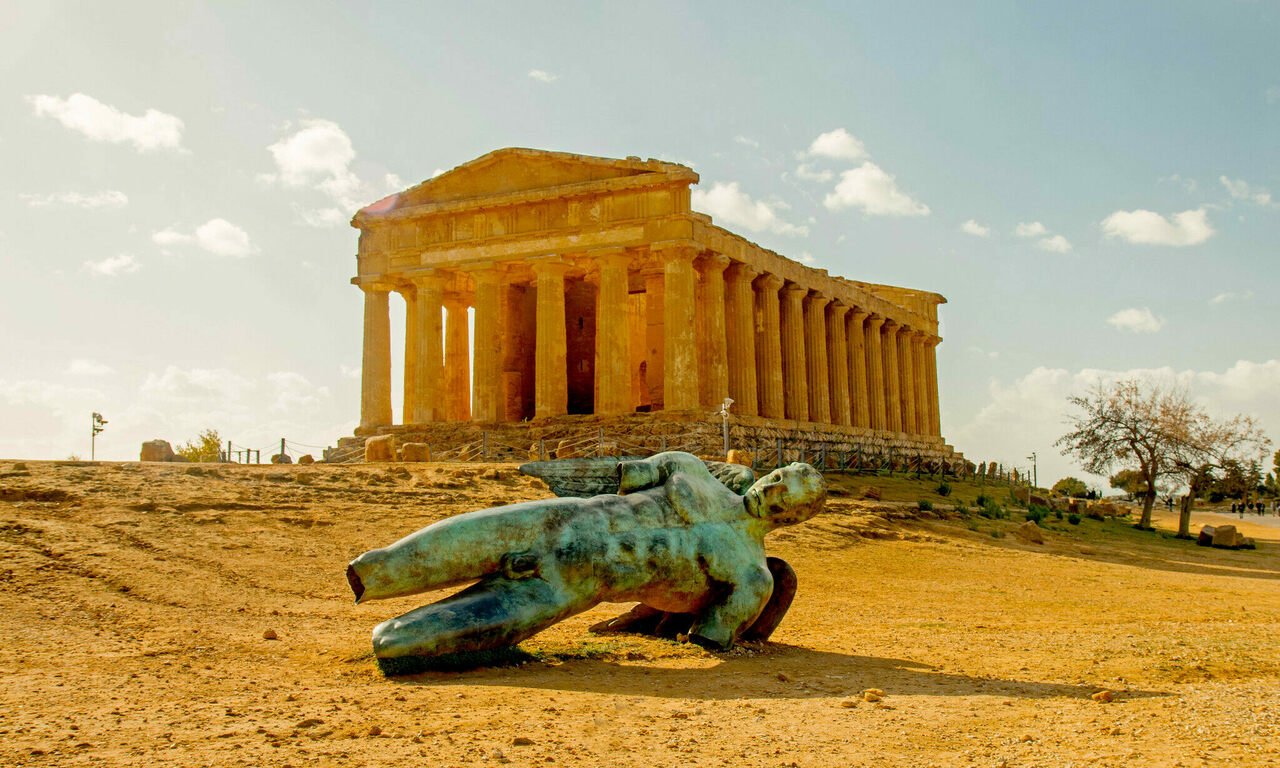 The Valley of the Temples in Agrigento (including the more contemporary “fallen” Icarus statue by the Polish artist Igor Mitoraj) is just one of the world’s incredible ruin sites. Photo credit: Andrea Schaffer / CC BY 2.0.
The Valley of the Temples in Agrigento (including the more contemporary “fallen” Icarus statue by the Polish artist Igor Mitoraj) is just one of the world’s incredible ruin sites. Photo credit: Andrea Schaffer / CC BY 2.0.
The ruins of an ancient city, temple, or necropolis are often the centerpieces of an adventurous trip: Stonehenge, Chichen Itza, the Great Pyramids. And there are other, perhaps lesser-known (depending on who you ask, of course) sites that are every bit as spectacular and worth planning an itinerary around. These places can let you walk in the footsteps of ancient people—sometimes without the crowds—to get a sense of the depth and richness of human history that you can’t get from any book or film. Atlas Obscura asked readers in their community forums to share their favorite ruins and archaeological sites. Any one of these places could be the focus of your next adventure.
Check out some of the submissions below, and if you have a favorite ruin or archaeological site that more people should know about, head over to the forums and keep the conversation going!
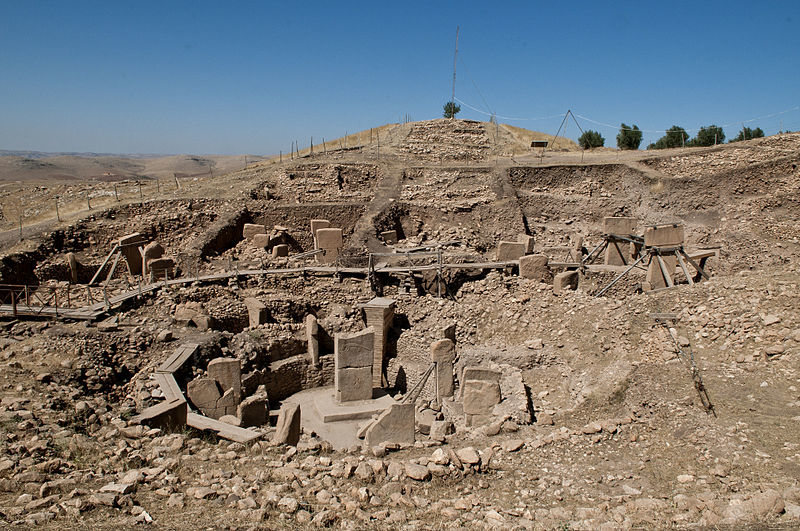 Photo credit: Teomancimit/CC BY-SA 3.0.
Photo credit: Teomancimit/CC BY-SA 3.0.
Göbekli Tepe
?anl?urfa, Turkey
“I’ve seen quite a few ruins around the world. I’m always in awe of rock-cut structures such as Petra in Jordan, the churches of Lalibela in Ethiopia, and Geghard Monastery in Armenia. But in my mind, nothing in the world can compare with the carved stone structures at Göbekli Tepe in Turkey. We’re so used to using the pyramids or Stonehenge as our standard for ancient, but these ruins rewrite history. Göbekli Tepe has been dated to 10,000 B.C., and it would be almost 7,500 more years before the pyramids were built! We are closer now to the construction of the pyramids (4,500 years) than between the pyramids and Göbekli Tepe. The large carved stones would be buried and lost near 7,000 B.C. The age, the scale, the state of civilization at that time (pre-farming) … it’s all absolutely mind-boggling and truly without peer anywhere else on the planet (so far!).” — MITFlunkie
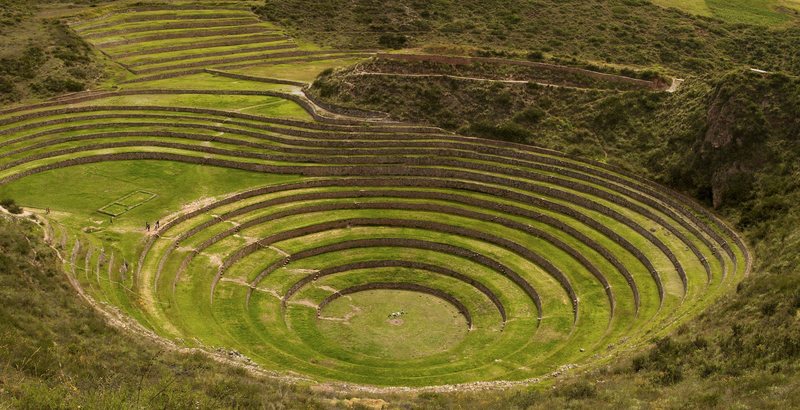 Photo credit: McKay Savage/CC BY 2.0.
Photo credit: McKay Savage/CC BY 2.0.
Moray Ruins
Maras, Peru
“I was awestruck visiting Moray in Peru, a sunken terrace extending down over 30 meters. Much less crowded than Machu Picchu and just as impressive!” — vb9923
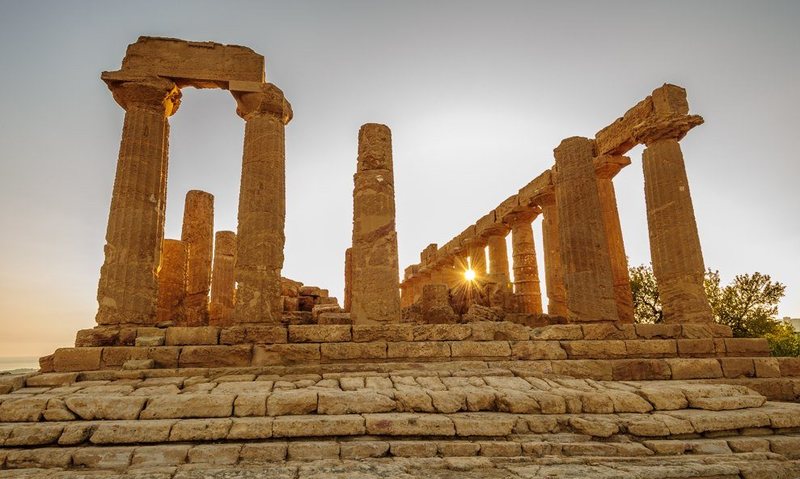 Photo credit: Jos Dielis/CC BY 2.0.
Photo credit: Jos Dielis/CC BY 2.0.
Valley of the Temples
Agrigento, Italy
“Feels like being in Greece!” — elokyrmse
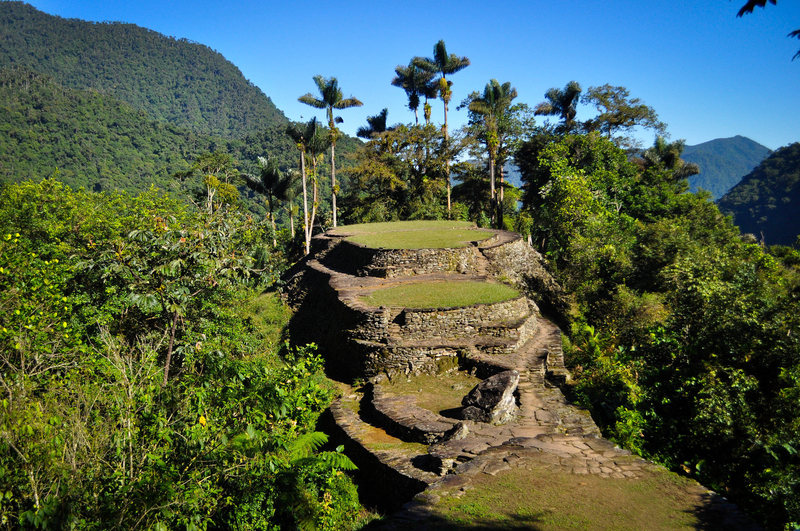 Photo credit: katiebordner/CC BY 2.0.
Photo credit: katiebordner/CC BY 2.0.
La Ciudad Perdida
Magdalena, Colombia
“Reached only after a grueling five-day trek through the Colombian jungle, it’s almost 1,000 years older than Machu Piccu and was built by the indigenous people who lived in the Sierra Nevada de Santa Marta. It was abandoned after the Spanish conquest and only rediscovered in the 1970s.” — vb9923
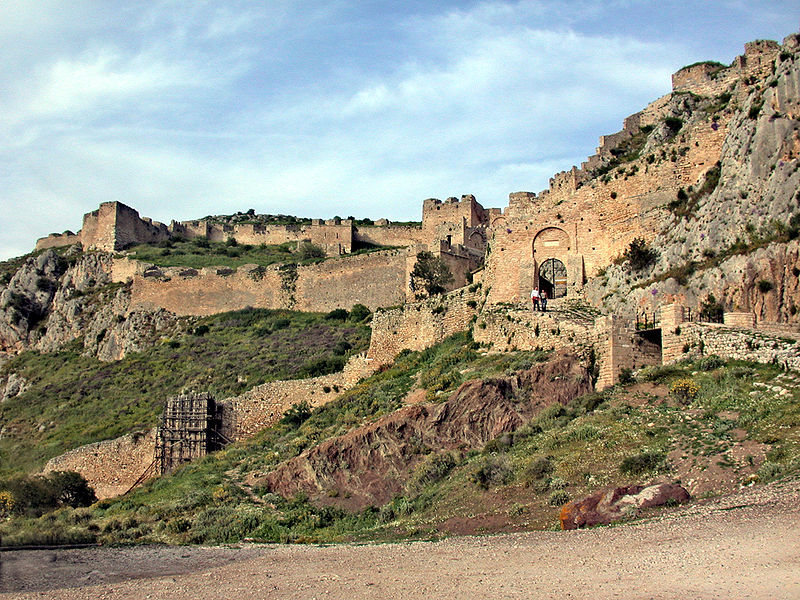 Photo credit: MM/Public Domain.
Photo credit: MM/Public Domain.
Acrocorinth
Corinth, Greece
“On my first visit to Greece in 1985 I explored the Acrocorinth, or Upper Corinth. Like the Acropolis in Athens, it was the formation overlooking the city. Unlike the Acropolis it was nearly deserted and basically open. I don’t remember if anyone else was even there, but sheep were roaming among the ruins. It made me feel how travelers to Greece in the 18th century must have felt in the then-village of Athens. I’ve been to Greece a number of times since, and driven by on my way to my family’s hometown, but haven’t been back. I’m afraid it would be less wild now.” — gjg64
 Photo credit: Bradley Weber/CC BY 2.0.
Photo credit: Bradley Weber/CC BY 2.0.
Ostia Antica
Rome, Italy
“After watching a documentary about the ancient port of Rome we decided to visit Ostia before leaving our two-week visit to Italy. Wow! Our first impression was how we had the site almost to ourselves. It was as if the port was sleeping and awaiting our arrival. Far more intimate than sites like Pompei with an amazing forum and arena and enormous mosaics still in the process of restoration. Magical!” — Bob_L
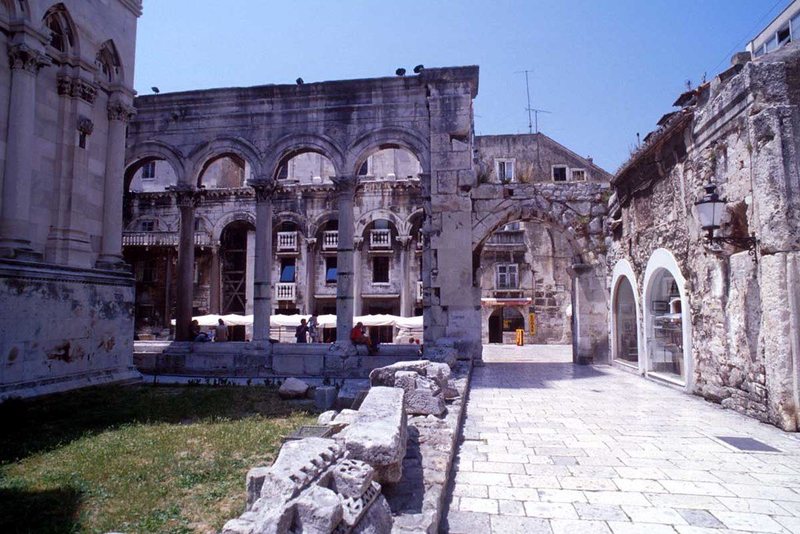 Photo credit: Tours in Croatia/CC BY 2.0.
Photo credit: Tours in Croatia/CC BY 2.0.
Diocletian’s Palace
Split, Croatia
“Roman Emperor Diocletian’s Palace in Split, Croatia, was a pretty awesome place. And there was a flower show inside!” — bowmancheryl
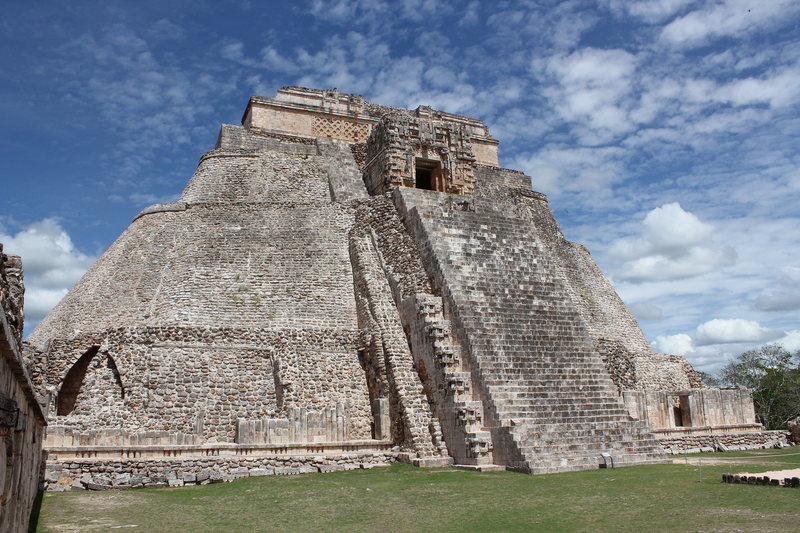 Photo credit: Arian Zwegers/CC BY 2.0.
Photo credit: Arian Zwegers/CC BY 2.0.
Uxmal Pyramid
Yucatán, Mexico
“It’s great to read about so many incredible ruins in Mexico, one of my favorite places to visit. During a trip to the Yucatán, we skipped Chichen Itza to explore some of the lesser-known sites. Uxmal was by far the most impressive. Wandering about this magical place, virtually alone, we could feel something indescribable, a spirit from the past perhaps. It’s something I can still feel today.” — michwillshea
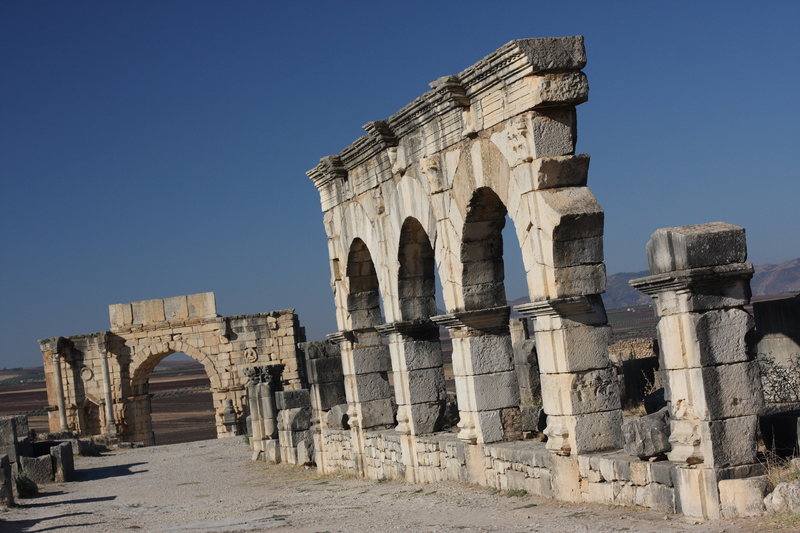 Photo credit: yeowatzup/CC BY 2.0.
Photo credit: yeowatzup/CC BY 2.0.
Volubilis Archaeological Site
Meknes, Morocco
“Volubilis, Morocco. The ruins of the Roman city were amazing to explore. An earthquake in the 18th century destroyed many of the buildings, and it’s now a preserved archaeological site. Considered to be one of the most remote cities of the Roman Empire.” — clantongraphics
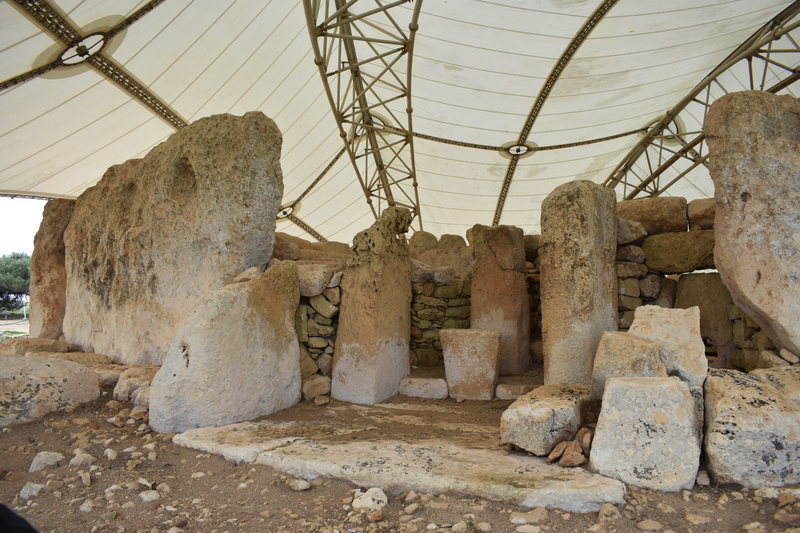 Photo credit: Continentaleurope/CC BY-SA 4.0.
Photo credit: Continentaleurope/CC BY-SA 4.0.
?a?ar Qim
Malta
“More ancient than Stonehenge. Older than the Pyramids of Giza. It’s ?a?ar Qim, among the oldest of structures. Mysterious? Yes, to us, as are the pyramids and Stonehenge. But were they mysterious to the people who built them and hung out there? Contemplating all of this as you walk and explore and imagine is the best part of being there.” — penelopeashe
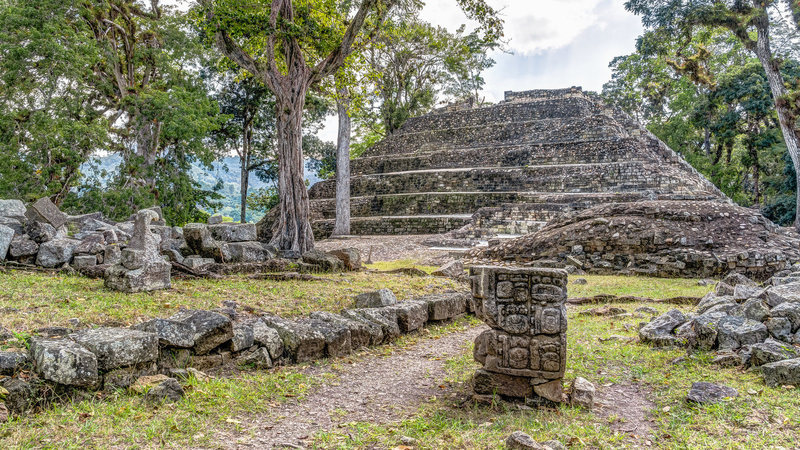 Photo credit: Steven dosRemedios/CC BY-ND 2.0.
Photo credit: Steven dosRemedios/CC BY-ND 2.0.
Copán Ruins
Copán Department, Honduras
“It’s hard to pick, but I think I’d have to go with Copán in Honduras. It’s not the most vertically impressive Mesoamerican site I’ve been to (that would have to be Tikal) and it doesn’t have the best setting (I’d vote for Palenque), but it has some of the most amazing carvings—detailed, baroque, and full of meaning. There’s even a stairway covered in Mayan hieroglyphs. The site museum is also off the charts. You enter by descending into a reproduction of a gateway into the underworld, and the centerpiece is a reproduction of a beautiful red temple they found buried under later works. Go early in the day and the morning squawks and flights of scarlet macaws in the jungle trees will make it even more magical.” — aeddubh
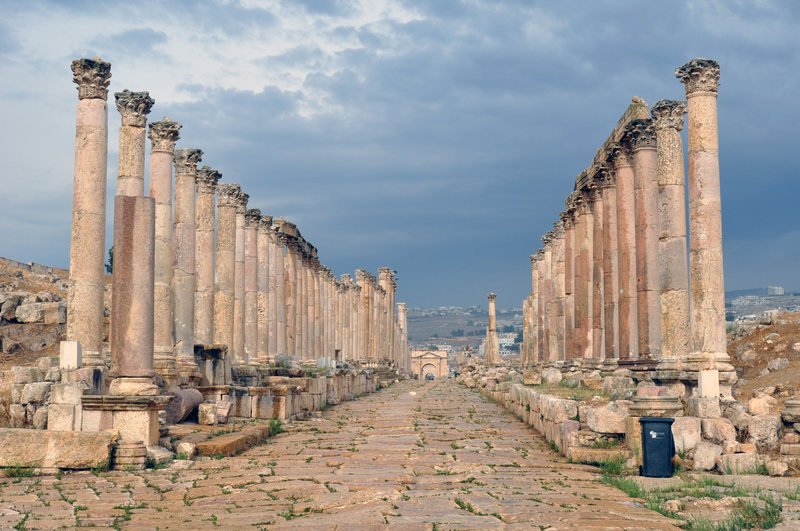 Photo credit: Jim Greenhill, U.S. Army/Public Domain.
Photo credit: Jim Greenhill, U.S. Army/Public Domain.
Ruins of Jerash
Jerash, Jordan
“It’s the most intact Roman city outside of Italy. And because of its location, it is also partly Greek, Byzantine, and Nabatean. It was a crossroads and ancient artifacts from many cultures ave been found there. We had the place mostly to ourselves when we were there.” — BrettElliott
 Photo credit: Kroelleboelle/CC BY-SA 3.0.
Photo credit: Kroelleboelle/CC BY-SA 3.0.
Norba Ruins
Lazio, Italy
“When wandering the Italian countryside, we randomly came upon the ruins of the Latium town of Norba, which was destroyed in 82 B.C. by Lucius Cornelius Sulla when he marched on Rome.” — wynoochie
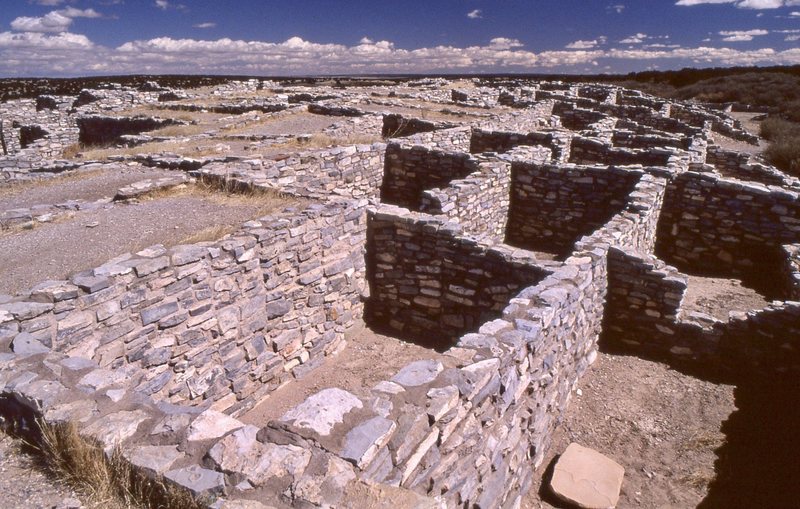 Photo credit: David Taylor/CC BY 2.0.
Photo credit: David Taylor/CC BY 2.0.
Gran Quivira
New Mexico
“I love ruins! I have visited sites all over—Asia, Middle East, Central/South America, Africa—my favorites are in Israel. But I have a great fondness for the ruins I visited earliest in my life, in New Mexico, especially Gran Quivira.” — jedwardboring
How was it? Save stories you love and never lose them.
For more information, please visit the following link:
https://getpocket.com/explore/item/14-lesser-known-ancient-sites-worth-building-a-trip-around


Leave a Reply